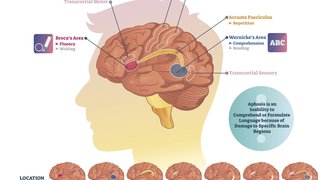
“The question is, how do you find a gene that you know nothing about?”
Chair of the Department of Neuroscience
For centuries, great scientific minds have questioned the very foundation of human behavior; are we products of innate, predetermined biological factors, a myriad of unique environmental influences, or an intricate combination of both? This is the very question that Dr. Joseph Takahashi has concerned himself with since first pursuing a career in neuroscience, and it continues to be a source of deep inspiration long after making one of the most impactful genetic discoveries of the past century.
Following in the footsteps of his academic forefathers — the likes of which includes notable scientific figures, Theodosius Dobzhansky and Thomas Hunt Morgan — Dr. Takahashi undertook a grand task to further unravel the secrets of our genetic foundation, and in doing so, uncovered the very gene responsible for generating mammalian circadian rhythms. It’s a discovery that not only continues to improve sleep behavior research, but also subsequently revealed a highly delicate interplay between body and mind at the cellular level.
“When we started this, no one had ever used this process before in a mouse to find a gene controlling behavior. They thought it was too risky and complex... like winning the lottery.”
Dr. Joseph Takahashi
The Discovery
Roughly twenty years ago, Dr. Takahashi and his colleagues set out on this daring scientific journey to successfully pinpoint a mammalian clock gene using an unbiased method of gene discovery.
Initially Dr. Takahashi and his colleagues studied brain regions that controlled circadian rhythms in animals. They could isolate these brain regions in vitro (in isolation in a test tube), but once they studied the biochemistry of rhythms in these cells, they were unable to actually pinpoint the critical proteins with traditional methods. He eventually concluded that the approach they were using had to be abandoned if they were to continue on with their search. What they needed was to turn to a method that could uncover novel processes; what they needed to do, was turn to genetics. As he’s quick to assert, his team’s undertaking was met early on with much skepticism. Many researchers in his field deemed it too daunting of a task to tackle, and some even believed it irrational to think that a single gene could control such a seemingly complex behavior. But Dr. Takahashi was confident that, given the proper approach and time, they could complete the ambitious task within a few years. After mentally preparing for what they thought would be an exhaustive long-term search screening thousands upon thousands of mice, they were absolutely astonished when an ideal subject was found after just a handful of screens; the subject, specimen No. 25, a peculiar mouse with a 28-hour circadian rhythm – a very strong mutation for helping Dr. Takahashi and his team pinpoint a clock gene. As Dr. Takahashi puts it, “This was like winning the lottery.” Over 20 years have passed since they first began this search, and in the thousands of screenings since, they still haven’t come across a mouse as ideal for their research as the one they found that day.
Once they identified this mouse with a 28-hour clock, the team then began their search for the clock gene with a systematic approach to locate the position of the gene within the genome. The method known as “positional cloning” is akin to using a GPS device to navigate the genome. But in those days, you had to build your own GPS device. Ten researchers in the lab worked together as a team for three years (30 person years of effort) to search for the gene. Fortified with a swath of advanced genetic mapping technology from the human genome project on their side, Dr. Takahashi and his team successfully pinpointed the CLOCK gene in 1997, and its partner, BMAL1, in 1998. The future of circadian rhythm and sleep behavior research was forever changed at this point, and by 2001, the team had mapped out the details of the entire biological clock mechanism.
“Within about a four-year period, our colleagues and I put together the whole picture of what the clock looks like.”
Dr. Joseph Takahashi

The Clock
Simply put, the biological clock mechanism functions as a basic negative feedback cycle. The two primary gene products, CLOCK and BMAL1, perform transcription factor duties inside the nucleus of a cell, which consists of regulating the production of proteins from two more sets of genes, PER (1&2) and CRY (1&2). When these genes are transcribed into mRNA they travel from the nucleus to the cytoplasm where they interact with ribosomes to produce proteins. The PER and CRY proteins then travel back into the nucleus of the cell and inhibit CLOCK and BMAL1. As these transcription factors become inhibited, the production of new PER and CRY proteins ceases. Once the PER and CRY inhibition ends, CLOCK and BMAL1 resume their function to start the next cycle. This negative feedback loop occurs on a daily basis, helping to regulate the functions of a variety of bodily processes.
“We are really trying to figure out now, how the clock is controlling all these other functions. Metabolism, immunology, cancer, cognitive function. There are extensive molecular links to all of these processes.”
Dr. Joseph Takahashi
Implications
The discovery of the mammalian clock gene not only defied the expectations of many in the medical community, but also opened the door to uncovering further secrets about our bodily functions. One of the most profound discoveries to have resulted from this recent breakthrough was the realization that there is a biological clock in every single cell in our body, in addition to the primary clock located in the hypothalamus. These clocks are called “peripheral clocks”, and they help regulate a variety of bodily processes including the regulation of glucose by the pancreas and the release of stem cells in bone marrow. Although these peripheral clocks are considered secondary to the primary biological clock in the brain, their role in helping maintain homeostasis is no less important.
When it comes to sleep research, the clock gene discovery has opened the door to a new future of possibilities for sleep disorder treatment, which is increasingly important in an era where the “average American is chronically sleep deprived.” Just recently, Dr. Takahashi and his colleague, Dr. Masashi Yanagisawa, uncovered the presence of two genes responsible for regulating deep sleep and REM sleep in mammals. These two genes, aptly named “Sleepy” and “Dreamless”, control the need for sleep and the amount of REM sleep mammals experience, which are crucial for encoding memories and coping with negative experiences. The discovery of these two genes is just the latest step toward uncovering the many mysteries of how and why we sleep. It’s also an important milestone toward developing more effective sleep disorder treatments.
“A goal is to have these genes uncover potential pathways or targets that can be used to develop better sleep medications.”
Dr. Joseph Takahashi

The revelations uncovered by Dr. Takahashi and his team helped spur a resurgence of academic rhetoric supporting the crucial role sleep plays in a society that has all but institutionalized a tendency to undermine its importance. It’s now widely accepted that sleep deprivation corrupts the synchronization of biological clocks and causes the body’s many metabolic and motor neural processes to dysfunction, resulting in symptoms akin to that of being legally intoxicated. As a result, sleep deprivation is responsible for an estimated 25,000 automobile related deaths each year and causes a degradation of the quality of life for those who suffer from chronic disorders.
Dr. Takahashi now spends a large portion of his time and energy spreading the message about the promising links between clock genes and the development of many major disorders and diseases. As he commonly describes it, the discovery of the clock genes was like opening the door into the mysterious black box world of sleep and uncovering the first secrets of how it affects our overall mental and physical wellbeing. Whether it’s giving lectures to an audience of hundreds, or grooming a newly appointed lab assistant, Dr. Takahashi is fervently continuing our perennial quest to understand human behavior and development, one gene at a time. With your help, he and his team can continue their journey with increased vigor and efficiency as we begin to venture further into a new, promising era of sleep research.










